Copyright © 2025 · All Rights Reserved · Ray's Travels
Swell Lite from Organic Themes · RSS Feed · Log in
One of the key things I made sure to work into this trip was a weekend in Kansas City to visit my brother. For some reason we didn’t really take any pictures of us while we were out and about but I did get a few pictures from some cool museums.
Arriving on Thursday night, I had Friday to explore Kansas City by myself while my relatives worked. Thanks to my friend Kirk for pointing out that Kansas City was a swinging jazz center for many years and suggesting a visit to the American Jazz Museum. Being a long time fan of jazz and more recently a vintage jazz DJ for swing dancing, this was a real treat.
When I’ve heard people talk about historical hubs of jazz I usually hear about New Orleans, Chicago and New York but less often Kansas City. It turns out that Kansas City was not only a hotbed of jazz but the roots of a distinctive jazz style called Kansas City jazz (Basie’s One O’Clock Jump and Jumpin’ at the Woodside are examples of this style). A number of the top artists of the era were raised or developed in KC and several famous bands were formed and discovered while in Kansas City.
In the 20’s, 30’s and 40’s, the 18th & Vine district of KC was ruled by mob and political boss Tom Pendergrast. Prohibition era liquor laws and other vice laws were largely unenforced. This led to a flourishing scene of nightclubs, gambling halls, cabarets and dance halls, all of which hired musicians to play for their customers. Pendergast was convicted of income tax evasion in 1940 after which the city started to enforce liquor and nightclub laws, tempering to a bit the scene in which jazz thrived so well. That said, jazz has continued to have a strong presence in Kansas City to this day.
Some of the artists that Kansas City lays significant claim to:
They don’t allow pictures inside the museum but here are a few of other historically noteworthy buildings in the area:
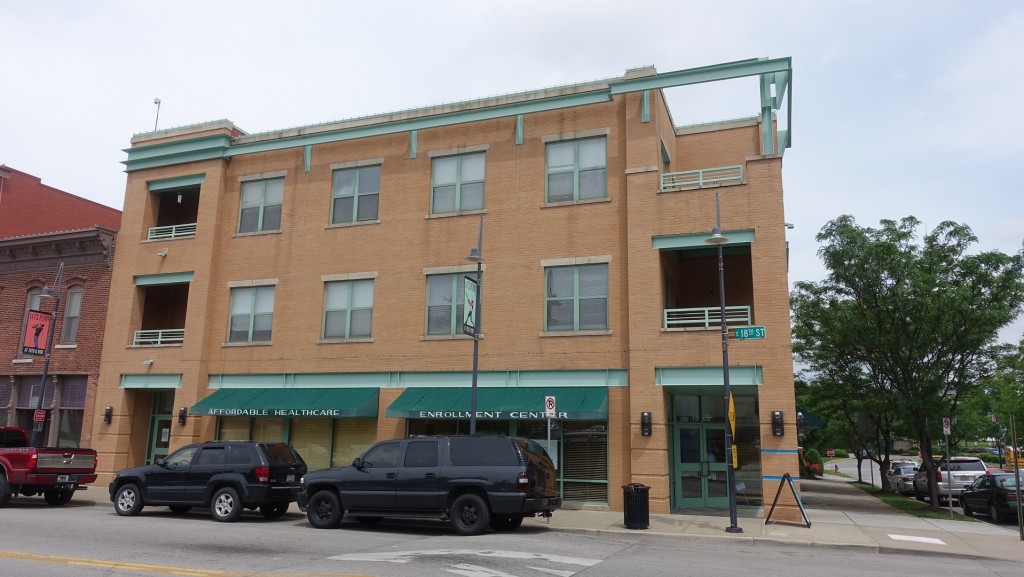
This was the Shannon Building and had Mable William’s Dance Studio on the 3rd floor and one of the most famous jazz clubs, Subway, in the basement. Benny Goodman, Coleman Hawkins, Gene Krupa, Jimmy and Tommy Dorsey, Ben Webster and basically everyone else played here.

Count Basie played the organ in this, the Centennial Church, which has a large congregation to this day.
The City Market suddenly showed up on my left so I stopped and restocked on fruits and veggies for camping/cooking:
This is one of the coolest museums I’ve visited in the last several years. The basic story behind it is great, the content and ongoing work of the museum is incredible and the quality of presentation is first rate.
The basic back story is that in 1856 the steamboat Arabia was docked in St. Louis and loaded up with 200 tons of supplies to be delivered upstream on the Missouri river. The river was safe when going downstream but treacherous when going upstream due to “snags”, or tree remnants that were prevalent in the river at the time and due to the direction of flow, the remnants tended to “point” downstream. A week after departing from St. Louis the Arabia hit a snag that tore a large hole in its hull, sinking it in only a few minutes. The water was shallow so the passengers were ferried to shore safely. Overnight the upper decks of the boat were torn into pieces by the force of the river’s waters; the rest of the boat and all of its cargo sunk in the mud where the boat went down.
130 years later Bob Hawley was called to a house for repair work and saw a map on the wall that showed Missouri river shipwrecks (there are hundreds), one of them being the steamboat Arabia. He and his two sons banded together to estimate where the ship should be located (the Missouri river has changed course many times since then). They determined it should be lying in a farmer’s field about a half mile from the current river bank. They approached the farmer to ask permission to search, he granted and a few hours later with a proton magnetometer they found it.
The excavation process is quite an engineering story due to the boat being below the water line, requiring pumping 20,000 gallons of water per minute to expose the ship and work on it. The treasure was incredibly well preserved due to the mud having a neutral pH of 7 and being an anaerobic environment. In the end they removed over 200 tons of cargo, much of which is in incredibly good condition. There are still-edible jars of fruits and leather boots you could wear today.
The trove of goods is beyond belief. Think of a Walmart Supercenter, a Noah’s Ark of stuff you needed in the mid 1800’s. There was room, after room, after room of stuff; everything you needed to live in the mid-1800’s.
Enough, here are some pictures, and seriously, check this place out if you find yourself in Kansas City:
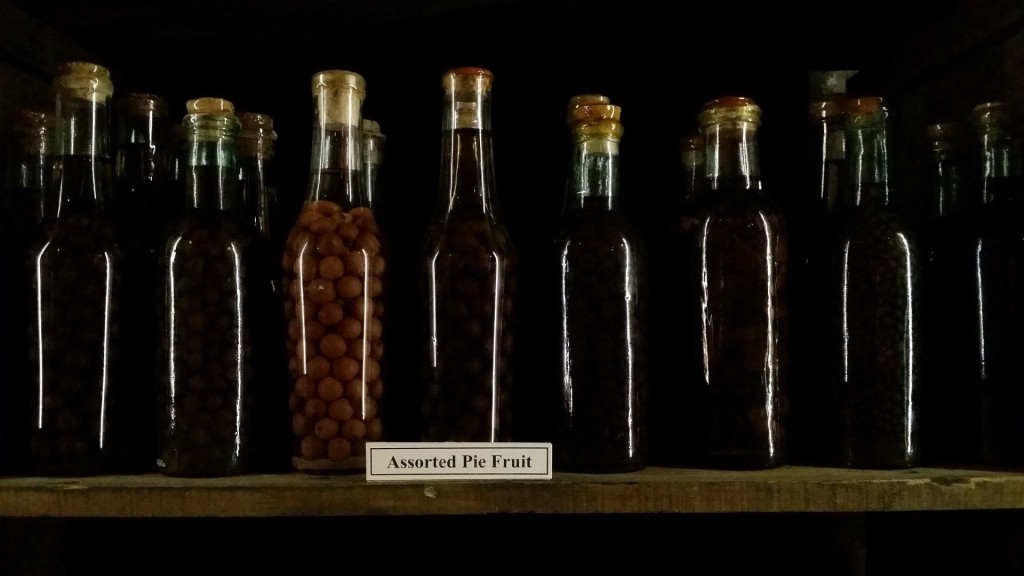
Still edible pie fruit. Crazy to think it’s still edible but the excavators did get to taste some and so they say!
The lights in the back of the truck weren’t working on my first night out. A special thanks to the dudes who installed my camper shell back in 2002 for running the power wire around sharp parts of the vehicle without protection. The fun part about the repair was that it was so windy outside that my brother’s normal solder irons couldn’t get enough heat on the joint to solder it. You can see we moved from a 37W iron to the next up, to the big mother, and had a blow torch in reserve, if needed.
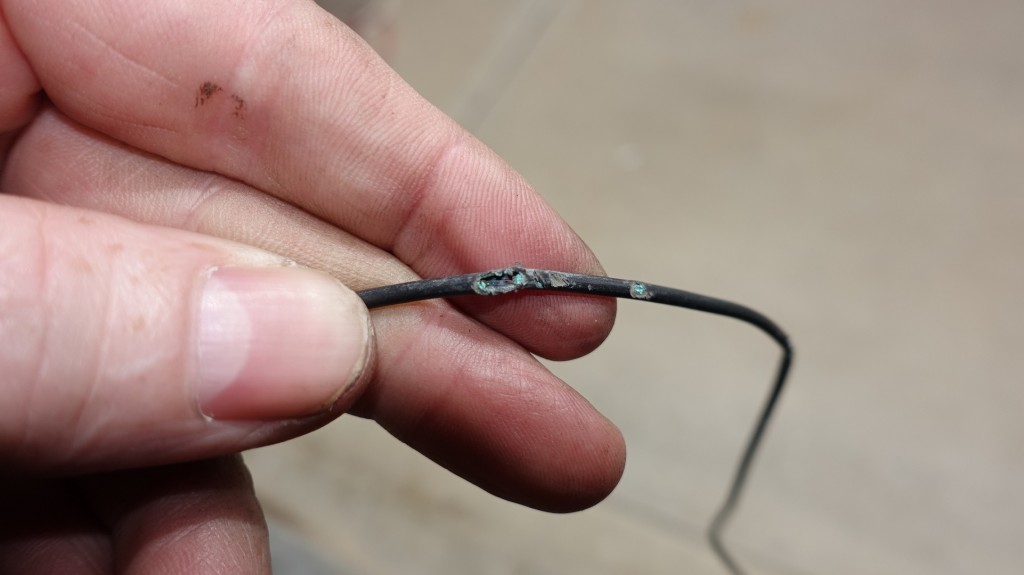
This wire was run under the truck with no protection when it came in contact with sharp things. There were several bad spots on the wire, this one shorted to the frame, killing my bed lights.
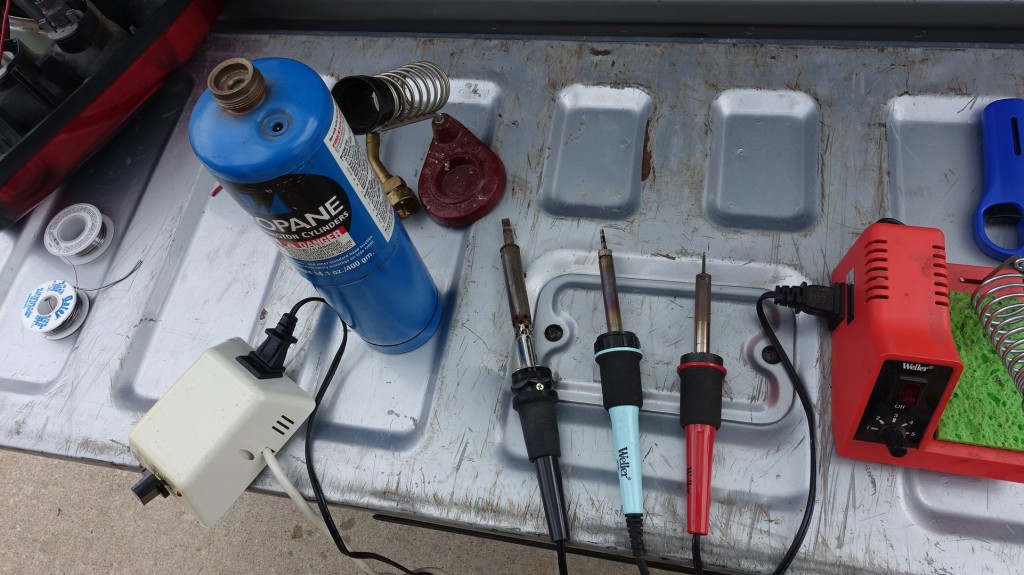
The solder iron progression. The big mother solder iron did the job. I’m glad we didn’t have to resort to the propane torch!
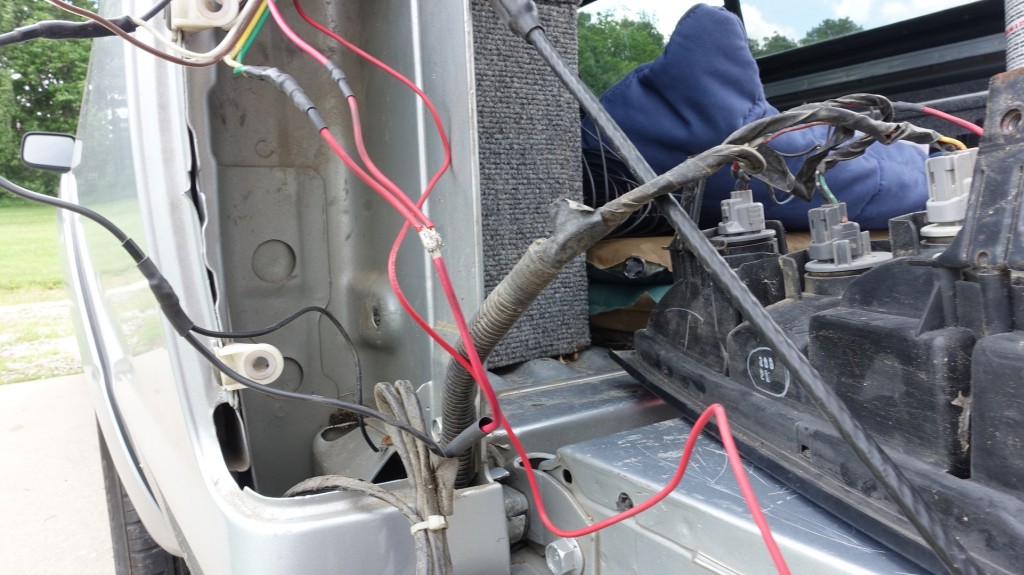
The last joint for my rewiring job. Just needs to be cleaned up with the big mother, then heat shrink and forget about it.
The truck lights are back in great working order. Not too soon either, I had to deal with rain for the next couple of nights so I spent some quality time in the back after dark.
Next I’m off to Boulder, CO to visit a friend and then onto the Rockies and a series of national parks. Stay tuned!